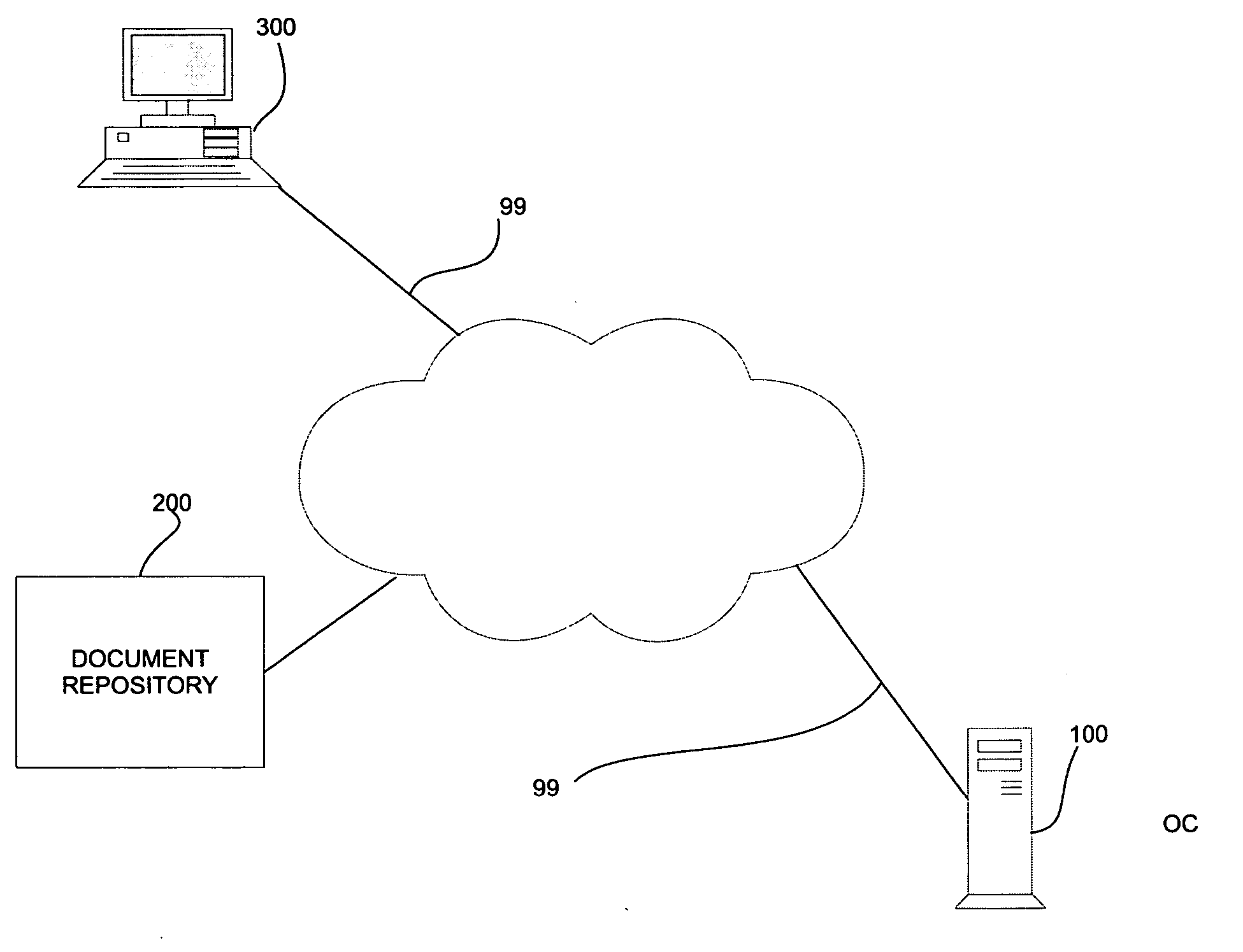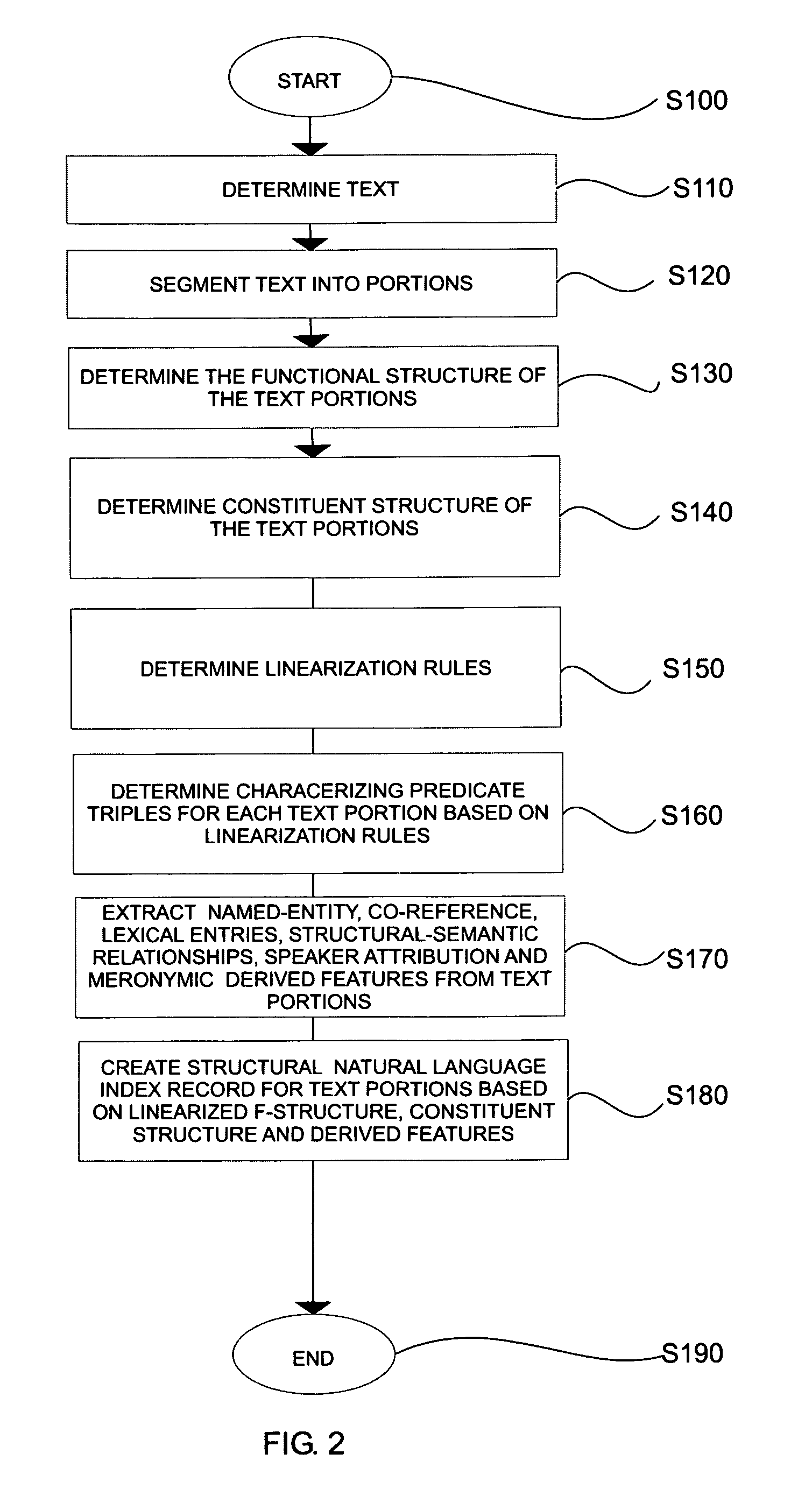Systems and methods for structural indexing of natural language text
a natural language text and structural indexing technology, applied in the field of information retrieval, can solve the problems of inability to extract precise information that satisfies more complex and semantically motivated constraints on relationships, and achieve the effect of efficient structural indexing
- Summary
- Abstract
- Description
- Claims
- Application Information
AI Technical Summary
Benefits of technology
Problems solved by technology
Method used
Image
Examples
Embodiment Construction
[0016] Systems and methods for efficient structural natural language indexing of natural language text are described. The systems and methods efficiently create structural natural language indices of natural language texts in a grammatically and lexically robust fashion, able to perform well despite many types of grammatical and lexical variation in how similar concepts are expressed. Since variability is permitted, correct answers can be identified despite significant syntactic and lexical variation between the question and the answer.
[0017] In one exemplary embodiment according to this invention, the text is fragmented into analyzable portions, analyzed and annotated with a variety of syntactic, lexical and co-referential information. The richly structured data is then flattened and efficiently indexed. Thus systems and methods are provided to transform texts through linguistic analysis into a canonized form which can be efficiently indexed and queried with existing token-based i...
PUM
 Login to View More
Login to View More Abstract
Description
Claims
Application Information
 Login to View More
Login to View More - R&D
- Intellectual Property
- Life Sciences
- Materials
- Tech Scout
- Unparalleled Data Quality
- Higher Quality Content
- 60% Fewer Hallucinations
Browse by: Latest US Patents, China's latest patents, Technical Efficacy Thesaurus, Application Domain, Technology Topic, Popular Technical Reports.
© 2025 PatSnap. All rights reserved.Legal|Privacy policy|Modern Slavery Act Transparency Statement|Sitemap|About US| Contact US: help@patsnap.com



